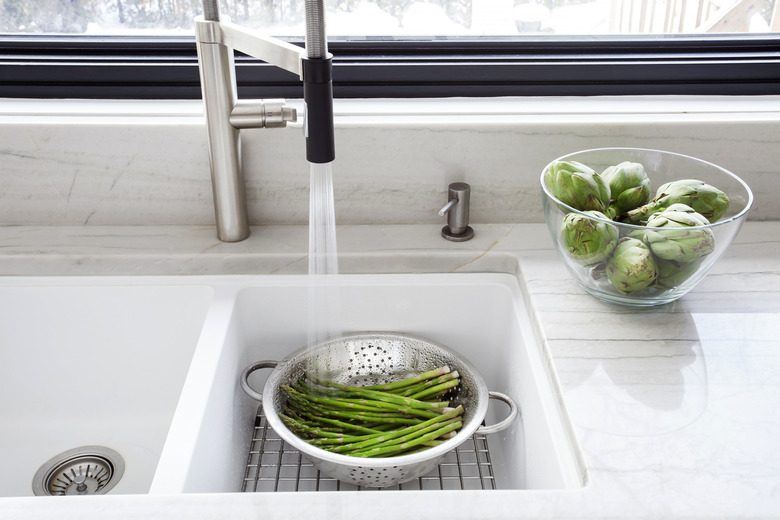How To Fix A Grohe Faucet Spray Head
If your Grohe kitchen faucet sprayer is leaking, is stuck on spray, has low water pressure or allows water to pass through all spray cavities at once, you can investigate several different areas of the spray head on your own to troubleshoot the issue. Some problems may require a brand-new spray head, but you can solve other spray head issues by disassembling and cleaning the key components.
Is It Really the Spray Head?
Is It Really the Spray Head?
Before you get too focused on tackling a Grohe kitchen faucet spray head repair project, double check that the problem truly exists in the spray head rather than elsewhere in the faucet. To remove the spray head, hold it in place with one hand and twist the cap above the spray head counterclockwise. Lift the cap out of the way and pull firmly down on the spray head to remove it.
After removing the spray head, turn on the water. Does the water flow out as expected, or does the water pressure seem too low? If a strong and steady stream comes out of the faucet hose without the spray head, you can continue looking for the problem within the spray head's components. If the water stream seems weak, the issue likely exists in the hose, cartridge or supply line.
Removing the Check Valve
Removing the Check Valve
Check valves prevent water from flowing backward through the faucet, which would contaminate the water supply. Sometimes, they get blocked and don't let water flow forward at the usual rate. Grohe kitchen faucets have a check valve within the spray head, and some models may have a second check valve above the cartridge in the neck of the faucet.
Using a screwdriver, hook the center of the check valve and pull it up. Flush both sides of the check valve with a strong stream of water to remove any debris. Push the check valve back into place when you're done.
Removing the Flow Restrictor
Removing the Flow Restrictor
The flow restrictor aims to reduce the amount of water that flows through the faucet, thus saving you money on your water bill in the long run. However, a flow restrictor may get clogged with calcium deposits and provide unsatisfactory water flow. You can typically locate a flow restrictor behind the aerator, which is the outermost part of the spray head. But sometimes, flow restrictors are found in front of or behind the check valve.
To remove a Grohe flow restrictor, start by unscrewing the spray head for easier access. Using the tab on a Grohe faucet key, which comes with the faucet but can be purchased separately, push out the inner ring that secures the aerator in place. Now, the round part of the faucet key should fit over the center of the aerator. Twist it counterclockwise until it comes out completely.
The flow restrictor, which looks like a circular bobbin with a series of holes punched into it, should be behind this aerator. Use needle-nose pliers to pull it out if necessary. If the flow restrictor seems dirty, clean it. Otherwise, remove the restrictor completely and see if that solves the problem.
Grohe Faucet Head Replacement
Grohe Faucet Head Replacement
Sometimes, the only course of action is to order a brand-new faucet head from the Grohe website. If the check valve and flow restrictor pass your inspection, but you cannot adjust the output from spray to stream, the spray head itself needs to be replaced. There's no way to do an adjustment button repair on your own. Fortunately, finding spare parts on the Grohe website is easy to do, especially if you have the exact model number handy.
